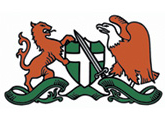Air travel is not only faster than other modes of travel but also the safest. Compared to rail or road accidents, airplane crashes are rare. However, when they occur, the results are devastating, with the occupants sustaining catastrophic injuries, if not death.
At the same time, smaller planes crash more than larger ones. Lawsuits to receive damages in plane crashes are complicated. Where a collision occurs is significant, and where the suit is filed substantially impacts your case's outcome.
Following a plane crash, the airline company and their insurance providers may call you to sign documents for your claim's fast settlement. However, this is not offered with your best interests considered. The reason behind their actions is to avoid lawsuits and protect their reputation.
Additionally, the offer they present you is often lower than what you need or deserve. When contacted, refuse to settle and instead find a Los Angeles Car Accident Attorney to pursue your claim for you. Our lawyers understand the case's complexity and believe that you should receive adequate compensation for your damages.
Understanding Catastrophic Injuries in a Plane Crash
Most victims of airplane crashes are the crew and the passengers onboard the plane. But sometimes, other victims can sustain these injuries as well. If you work in an airline or go for an airshow, you can sustain injuries from an airplane accident. Whether a passenger, a crew member, a worker, or an outsider, you can retain life-changing injuries when a plane accident occurs.
When an injury is described as catastrophic, it means the damages from it are permanent or long-lasting. Simultaneously, some fatal injuries may not be apparent but later, they result in significant problems. Some catastrophic injuries you could sustain as a victim of a plane crash include:
Severe Burns
When a plane crashes or develops mechanical problems, it often erupts into flames. When a plane strikes an object, it can burst into flames. Equally, planes' high combustible fuel accelerates the rate at which it burns, making the fire intense and challenging to extinguish.
If you manage to be pulled from the wreckage, more often than not, you will have sustained catastrophic burns that will leave you permanently disfigured. In most cases, treatment for burns requires lengthy hospital stays and surgical procedures to correct the damage. If you inhaled the fumes of the flame, a fire might have traveled to your internal organs, causing damages to them as well. These injuries are sensitive to treat and can result in death.
When the skin starts healing, despite the surgical procedures, your body may suffer permanent disfigurement. Even after healing, some burn injuries may leave you unable to use some of your body parts. When internal organs are affected by the fire, you may require transplantation of the organs. This will mean you need to find a matching donor or wait a long time before one is found. You will suffer significant pain through this time, and your life will be on hold.
The psychological trauma from these injuries is also substantial. As a result, you may need therapy to cope with your new norm. Physiotherapy is also necessary to regain the use of body parts following the burning.
Neck and Head Injuries
The forceful impact of a plane crash on a victim's head or neck leaves them with significant injuries. Most victims that suffer these injuries are left in a vegetative state, meaning you will require round the clock care every day of your life. Additionally, when you suffer these traumatic injuries, you may be unable to work again, denying you a living.
The high cost of treatment and hospital stay results in victims hiring around the clock caregivers to care for their needs. This is costly to the family and can exhaust your savings as well as leave you in debt. If you sustained these injuries, you might also suffer cognitive dysfunction. This impairs your ability to decide, forcing you to rely on others for basic things. These injuries also affect your mobility, resulting in you having abnormal speech as well as emotional challenges.
The treatment procedures you would undergo under the circumstances are extensive, and you may never function as you used to. Psychological damages because of the injuries are also significant requiring an extended period of therapy.
Spine and Back Injuries
These injuries are common in a plane crash. The injuries are catastrophic because they often result in partial or total paralysis of the victim. If you are paralyzed from the neck down, it means you lose the use of your limbs and other parts of your body. Such injuries mean you cannot control your bladder, bowel movement, among other bodily functions. In helping manage the new norm, a catheter is fitted to collect urine and use diapers.
If you suffer partial paralysis, it means you lose feeling in parts of your body, such as the inability to walk and instead relying on a wheelchair. Partial paralysis is less severe than complete paralysis, but they are all catastrophic injuries. Injuries to your spine can also cause other complications. These may include chronic pain, exaggerated reflexes and spasms, circulatory challenges, and respiratory issues. Treatment for the injuries in most cases is extended, besides altering your life.
Limb Amputations
Plane crashes also can result in the victim suffering amputations of their limbs. This occurs either at the scene or as a result of the damages caused. If the body parts are not severed at the location, the bones holding them together can crash severely, resulting in its amputation.
When a body part is lost, it means your life is altered because you will have to adjust to living without the specific body part. The psychological trauma from the injury is also extensive and challenging to cope with. Part of the treatment will require replacing the lost limb with a prosthetic one. This is costly, let alone the pain of adjusting to using it.
Lose of sight
You can lose your eyesight due to flying objects hitting your eyes or because of the trauma on your head. Losing your sight is a traumatic event that will negatively affect your life. If you sustain injuries to your eyes, you may require surgical procedures aimed at correcting your sight. Despite these procedures, some victims never regain their sight, forcing them to learn how to cope with life as a blind person.
Lost Hearing
Losing your hearing can be a traumatic experience. As the plane crashes, the loud sound it produces upon hitting the ground can damage your ears, causing permanent loss of hearing. This will permanently alter your life because you start learning how to use sign language to communicate and understand others' words.
Wrongful Death
As earlier observed, plane crashes are rare, but when they happen, the devastation is significant because most victims die from the impact. Although death is not categorized as an injury, it is one of the most traumatic plane crash outcomes. A loved one can die at the crash site or later due to the injuries sustained. When a death occurs, the surviving family is compensated for the lost life.
Causes of Catastrophic Plane Crashes
Although plane accidents are rare than frequent road accidents, they cause worse or more devastating injuries and outcomes than traffic accidents. Plane crashes, causing the above-discussed injuries, can occur due to various reasons. California is a fault state meaning the party responsible for a plane accident must be held accountable for the damages that arise. Some reasons for the catastrophic plane crash accidents are:
- Lost control while flying
- When the component system fails
- Fuel complications
- When the plane is operating on significantly low altitudes
Despite these reasons, the prevalent causes of plane crashes include:
- Error or mistake by the pilot
- Bad weather
- Aircraft malfunction or other mechanical problems
Pilot Mistakes or Errors
Experience in flying planes is critical. Before a person is awarded a license to fly a plane, they must have flown for at least forty hours. Besides this FAA requirement, a pilot must pass knowledge, medical, flight, and TSA authorization tests.
However, even with the above qualifications, pilots can make mistakes that result in plane crashes. Pilots, just like drivers, often face challenges in their line of duty. An inexperienced pilot can panic and fail to know the right way to handle the challenge. Inexperienced pilots fly smaller planes. As a result, when faced with challenges such as storms, it becomes impossible to navigate through and end up crashing.
Bad Weather
Unfavorable weather conditions make it difficult for most planes to navigate through. During a storm, bigger planes can navigate above the storm safely. Smaller aircraft, however, lack this ability and find it challenging to navigate through the storms. For example, when it is raining heavily and there is lightning, a smaller plan's electrical system can fail, causing it to crash.
Small plane pilots must understand different weathers and how to prevail over them. Knowing when to expect the weather changes is also critical to avoiding crashes resulting from poor weather.
Aircraft Malfunction
Despite the high maintenance of planes, they still suffer mechanical and electrical malfunctions. Typically, commercial planes that crash cause more fatalities than smaller planes. Irrespective of the aircraft's size, a malfunction can occur at any time, resulting in catastrophic crashes. When a malfunction occurs in a bigger plane, it is more challenging to maneuver safely and land it. However, smaller aircraft are more comfortable to control when they malfunction, meaning the occupants are likely to survive its crash.
Bigger planes fly faster and add to their size; it becomes impossible for them to land safely, resulting in devastating accidents. Failure of equipment often results in the plane's crashing, despite the experience a pilot may have.
Liability and Negligence Laws in California
California uses both the at-fault and comparative negligence theories in compensating victims of an accident. Under the at-fault theory, the party responsible for the plane crash is held liable for the damages that result from the accident. This makes determining the reason for a plane crash very critical to claim damages from the right entity.
Under the comparative negligence theory, victims of an accident can claim damages even when they were partially to blame for the crash. The jury determines your degree or percentage of liability before awarding your costs according to your contribution. Even when you were more than 50% responsible for California crashes, you are still entitled to compensation under the comparative negligence law.
Under California's compensation laws, when an airline or a company exchanges money to offer its services, it becomes a common carrier. As a result, the company or airline owes you a duty of care, meaning they must act with utmost diligence in ensuring your safety. Under this understanding, they are held at higher standards than ordinary negligence, and this duty starts as you board the plane to your disembarking. If you are traveling on a commercial plane, but you are not a paying passenger, the airline or company still owes you a duty of care and due diligence, but not of utmost consideration.
Utmost care also extends to the operations and maintenance of the plane. In most cases, an independent contractor is charged by the airline to maintain its aircraft, but the duty is not transferable or delegable. This means an airline cannot avoid this responsibility because it hires an independent contractor to offer the service. Therefore, if the plane crashes due to the contractor's negligence, the airline is held responsible for the contractor's oversight.
When a crash occurred with a private plane, investigations are carried out to establish the pilot or aircraft owner's negligence. Negligence, in this case, can be as a result of:
- Pilot error
- Aircraft manufacturer
- The owner of the plane
- The maintenance company and
- The government
The federal government typically employees air traffic controllers whose job is to direct and guide pilots as they operate their planes and as they land. If government employee errors in their work, the mistake can result in a plane crash. In this case, the government is held liable for the damages due to the collision.
Determining Your Case Following a Plane Accident
Evidence determining the party at fault following a plane crash is not easy to obtain. Often, no survivors exist to give their version or a statement of the occurrence. The wreckage is often extensive, making it difficult for FAA forensic investigators to determine the crash's actual cause. Fortunately, the legal theory of res ipsa loquitur helps victims of a plane crash win their cases. This theory protects victims of a plane crash when the collision's actual cause cannot be established.
The principle under this theory assumes negligence if your case or claim meets the conditions below:
- The type of crash can't occur without another person being negligent
- The defendant exclusively controls the instrument that caused your injuries
- The accident or injuries were not because of your contribution or doing
Following this theory, compensation law presumes negligence in most airplane crashes except those that the pilot is found directly responsible. The crew in a plane could seek damages if another party were responsible for the accident besides their employer or the pilot. If the team can prove negligence on the plane's manufacturer or supplier, the law allows them to seek damages from them.
Proving Liability
Sometimes, there is usually no one to blame in a plane crash, for instance, when the crash happened due to bad weather. But, most plane crashes have multiple parties responsible for it. With a comprehensive investigation, the impact's actual cause can become determined, and the parties accountable.
Although it is challenging to determine the actual cause of a plane crash, it is vital to establish it because the potentially liable parties are many and include:
- The airline or company
- The airport
- The pilot or co-pilot
- Air traffic control staff
- The manufacturer of the plane and
- The maintenance company
Despite the cause of the crash, a victim of a plane crash has a right to physical, financial, and emotional damages or compensation. The jury and the judge have a mandate to determine the parties liable and their degree of liability. Damages are then distributed according to the degree or percentage of liability.
Compensable Damages in Catastrophic Airplane Accidents
An aircraft accident often leaves the victims with devastating injuries if they survive the crash. When you have been involved in a plane crash, you can recover economic, non-economic, and punitive damages. Below, we discuss what each of these damages entails and the requirements for each.
Economic Damages
Damages under this category have a dollar value to them. The expenses you incur because of the injuries currently and in the future are compensable under the law. These include:
- Medical bills – When you are injured from a plane crash, you will automatically require medical care. Your treatment costs, the medications, and procedures involved in your treatment are compensable under the law. Equally, if there is a need for future treatment or caring, the cost for these is established and compensated.
- Physical or occupational therapy costs – Some injuries will require you to undergo physiotherapy treatment to cope with the injuries’ new situation. The value of these therapies is quantifiable and compensable as economic damage.
- Psychological therapy – Life-changing injuries often leave the victim with psychological trauma. The cost of counseling sessions is compensable under the law.
- Long and short-term nursing – Most catastrophic injuries require a victim to have around a clock caregiver. The cost of this nursing care is tabulated and compensated.
- Lost Income – Catastrophic injuries take a long time to heal. During the healing period, you would miss work resulting in lost wages. The income you lose during your recovery period is compensable under the compensation laws of California.
- Lost earning capacity – On most occasions, catastrophic injuries result in the victim losing their ability to work and earn a living. Because plane crashes often result in these types of damages, the amount you would have made for the rest of your life if you were not injured is calculated and paid.
Non-economic Damages
These damages do not have a defined dollar value and are often based on the injuries a victim sustains. These damages include:
- Disfigurement – Most catastrophic injuries would leave you with permanent disfigurement. For instance, loss of a limb is a disfigurement, yet the lost limb's value is not quantifiable. Despite this fact, the loss is compensated under the law.
- Lost enjoyment of life – When you sustain catastrophic injuries, you are denied the pleasure of life. This loss has no dollar value but is compensable.
- Pain and suffering – Catastrophic injuries cause excruciating pain to the victim, both physically and psychologically. Although the pain is not measurable, it is a loss. Nevertheless, that deserves compensating.
Emotional distress, pain, and suffering are the most substantial benefits of non-economic damages. No formula known to exist helps calculate non-economic losses, but the compensation varies from one case to the next.
Punitive Damages
The last type of damages you can receive following a catastrophic plane crash is punitive damages. These damages are awarded to the victims as punishment to the defendant if their behavior was grossly negligent, intentional, or malicious.
Statute of Limitations
The period within which you must petition the court for your damages is known as the statute of limitations. If you fail to file a lawsuit seeking damages within the set time, you lose the right to recover these damages through the court system. The law has set out the statutes of limitations to encourage fairness.
Over time, relocation of witnesses occurs, evidence disappears, and memories fade. This can be detrimental to your case, making it imperative to file a suit for your damages within the shortest time possible. Equally, the defendants are protected from claims coming up that happened a long time ago.
Find an Los Angeles Airplane Accident Attorney Near Me
Aircraft accidents are the most devastating of all accidents because of catastrophic injuries survivors sustain and the high probability of all occupants dying from the crash. The physical, financial and psychological damages following these accidents are equally substantial. Receiving your damages soon after the accident is critical to cater to the injuries sustained and property damage. Compensation following a plane crash can be intricate, but we understand the complications and how to pursue your damages at the Los Angeles Car Accident Attorney. If you or a loved one is involved in an aircraft accident, call us at 424-237-3600 to discuss your claim in detail.






